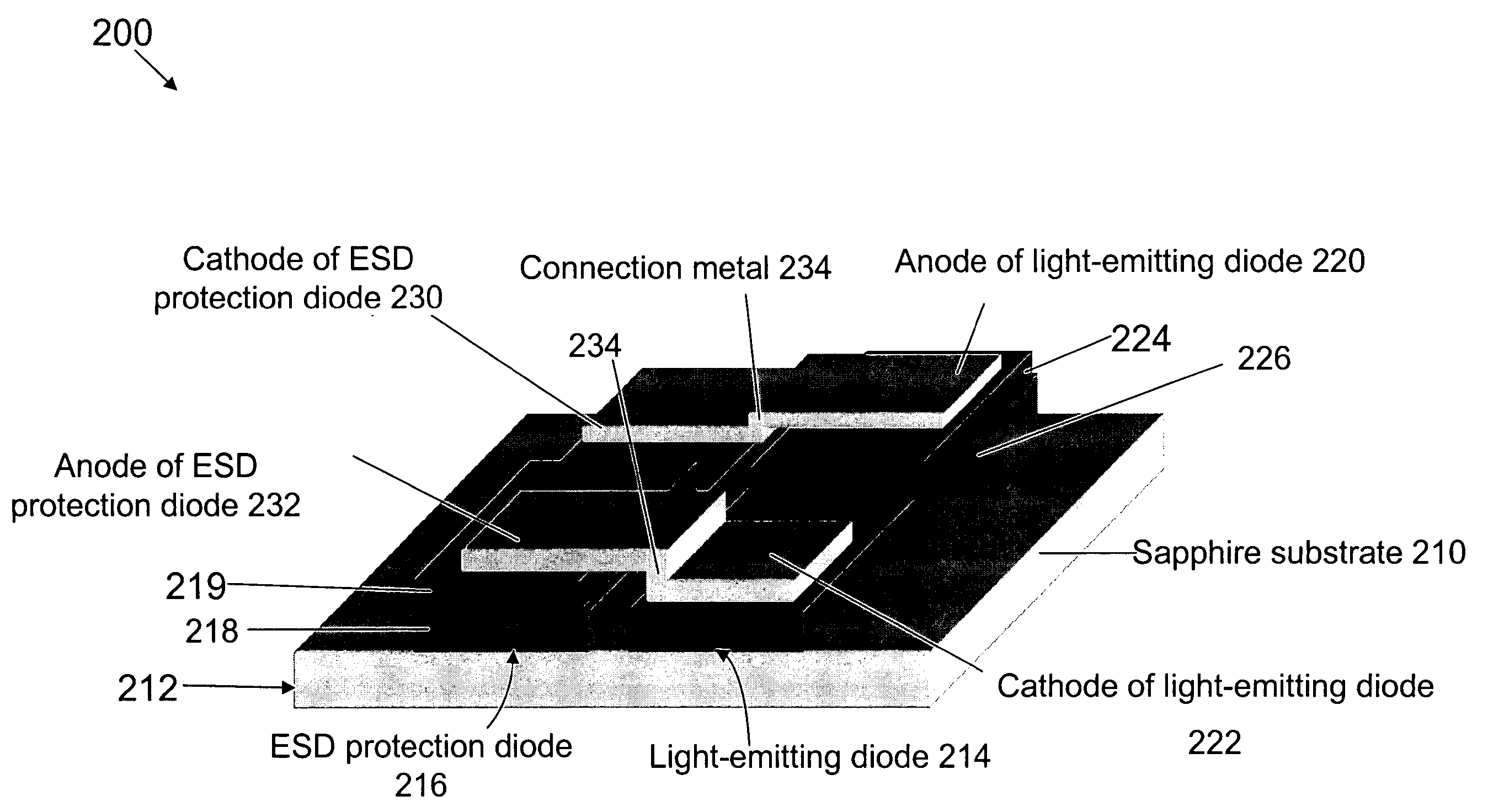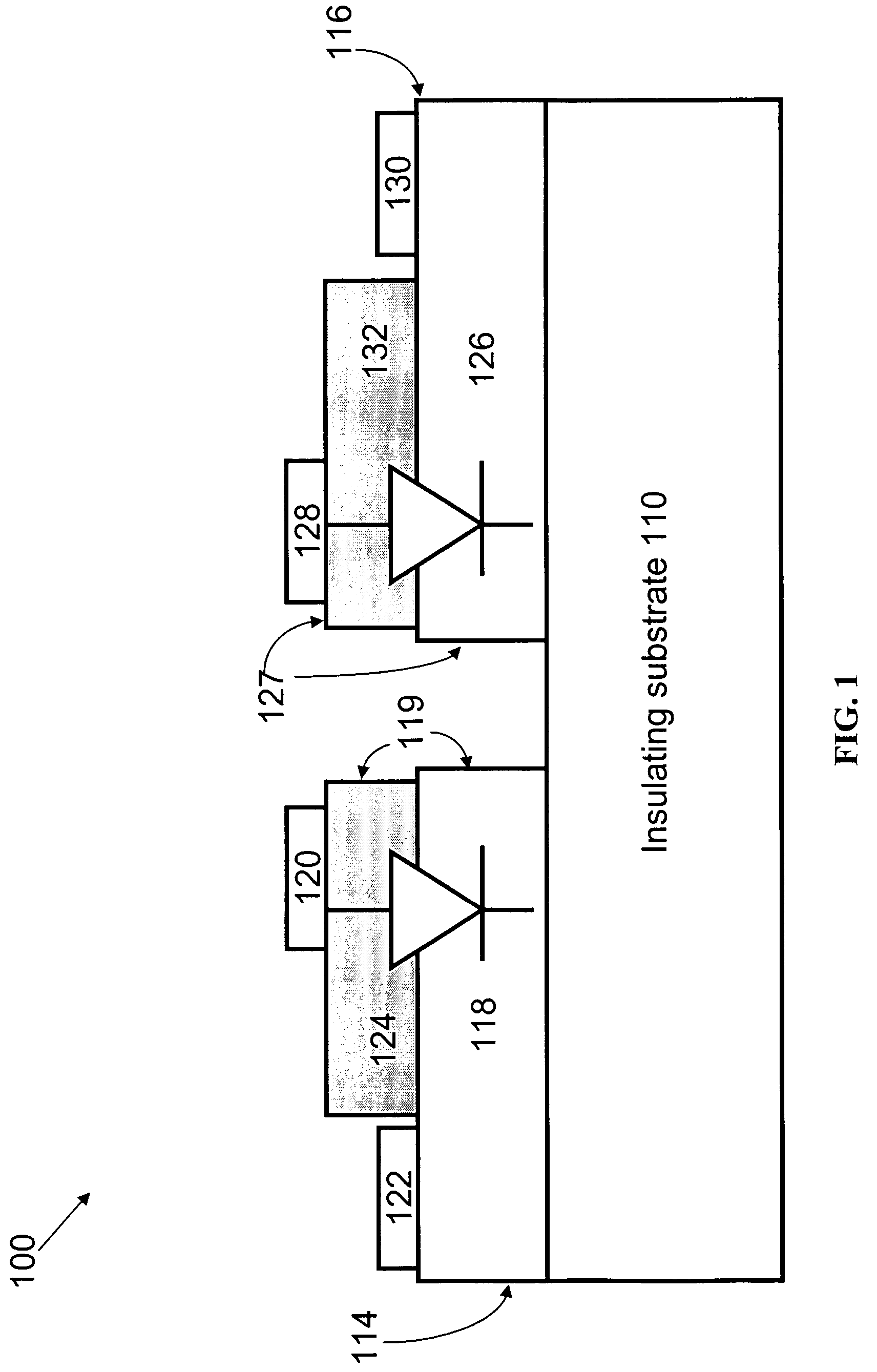Monolithic integration and enhanced light extraction in gallium nitride-based light-emitting devices
- Summary
- Abstract
- Description
- Claims
- Application Information
AI Technical Summary
Benefits of technology
Problems solved by technology
Method used
Image
Examples
example 1
Deposition of GaN-Based Semiconductor Layers on a Sapphire Substrate
[0069] Semiconductor layers were grown in a c-sapphire substrate by low-pressure MOCVD. The first deposited layer was a 20 nm-thick GaN nucleation layer, which was followed by a 4 μm-thick, silicon-doped (doping concentration of about 1019 cm−3) n-type GaN layer. The next layers were multiple quantum well active layers made of InxGa1-xN / GaN (017 cm−3, as determined by the Hall measurement. After the MOCVD growth of the epitaxial layers, the device fabrication was carried out using conventional semiconductor processing techniques commonly used in industry.
example 2
Device Fabrication: Monolithic Integration For ESD Protection
[0070] Using the semiconductor layers grown as described in Example 1, an integrated light-emitting device that includes a light-emitting diode and an ESD protection diode was monolithically fabricated. The integrated light-emitting device was fabricated following the schematic of the integration shown FIG. 4. The definition of two junction areas and the subsequent device isolation were achieved by ICP etching processes. Transparent contact layers based either on nickel-oxide (see U.S. Pat. No. 6,734,091) or on indium-oxide (see Attorney Docket Number 0717.2048-000) were deposited on top of the p-n junction areas to enhance the current spreading throughout the p-type GaN layers. In order not to short the diodes an insulating layer of silicon dioxide was deposited by plasma enhanced chemical vapor deposition (PECVD) on the whole surface. Openings were made in silicon dioxide layer by a chemical wet etching only in the area...
example 3
Device Fabrication: Monolithic Integration For ESD Protection with a Relatively Small-Sized ESD-Protection Diode
[0073]FIG. 5 shows another example of the monolithic integration of a light-emitting diode and an ESD protection diode. The ESD protection diode in this example was made much smaller than that of Example 2 in order to minimize the increase in the operating voltage and the decrease in the light output. The fabrication process was the same as those of Example 2. The finished device size was 300×300 μm 2. During the test of the ESD tolerance in HBM, 100% of the devices with two diodes that were tested showed endurance against HBM up to 1000V. Hundred samples were tested for each device, i.e., the integrated device of the invention and control device. This result confirms an improvement in the ESD endurance as a result of the monolithic integration with a much smaller size protection diode. Due to the small size of the protection diode, the forward operating voltage and the l...
PUM
 Login to View More
Login to View More Abstract
Description
Claims
Application Information
 Login to View More
Login to View More - R&D
- Intellectual Property
- Life Sciences
- Materials
- Tech Scout
- Unparalleled Data Quality
- Higher Quality Content
- 60% Fewer Hallucinations
Browse by: Latest US Patents, China's latest patents, Technical Efficacy Thesaurus, Application Domain, Technology Topic, Popular Technical Reports.
© 2025 PatSnap. All rights reserved.Legal|Privacy policy|Modern Slavery Act Transparency Statement|Sitemap|About US| Contact US: help@patsnap.com



